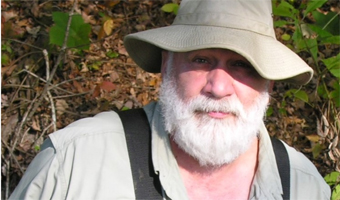Note: This event has been rescheduled to Feb. 26th.
The Environmental & Plant Biology Colloquium Series presents Ohio University alum Robert Wiley on “The Germantown Bog; Results of long-term observation of a relict periglacial fen on the upper Maryland Piedmont” rescheduled to Friday, Feb. 26, at 11:50 a.m. in Porter 104.
Wiley is Senior Field Ecologist at Ohio University’s Voinovich School of Leadership and Public Affairs and President of Good Ground LLC, an ecology assessment service based in Southeastern Ohio. Wiley is also a PBIO alumnus.
Abstract: The Germantown Bog (The Bog) is protected and listed by name in the Maryland Non-tidal Wetlands Protection Act as a wetland “Area of Critical State Concern” (ACSC). ACSC status prohibits activities within or nearby the designated wetland that may result in a potential for disturbance or alteration of the designated area. The reason for the designation was the know occurrence of populations of three rare or endangered plants; Canada Burnet (Sanguisorba canadensis L.), swamp oats (Trisetum pensylvanicum) and Buxbaum’s Sedge (Carex buxbaumii); all montane or boreal species. Located in rural Montgomery County near Washington DC, developers applied to Maryland National Capital Parks and Planning Commission (M-NCPPC) in1989 for necessary permits to construct a shopping mall and housing development on the pasturelands surrounding The Bog. In the summer of 1990 my proposal was selected by M-NCPP in an open solicitation to characterize the pre and post development conditions and monitor any potential effects of the proposed development. Field studies began that year and continued annually through 2003. Intermittent observations or the plant community have continued annually. Ground and surface water monitoring has been continuous. A full field reevaluation of the plant community is under consideration for 2016.
The Germantown Bog is a 6-acre disjunct sedge fen driven by old groundwater discharging from folded bedrock structures along the eastern edge of the Appalachian orogeny. Occurring at mid-latitude (39°) and low elevation (500 feet mean sea level), the plant community contains an array of species normally associated with montane and boreal conditions, and is thus definable as a disjunct or relict community. Conditions more suited to the prevalence of this species grouping occurred in the area during the late Pleistocene when a boreal climate prevailed. Great anthropogenic efforts applied to convert this site to agriculture for the last two centuries have failed. There are no other known sources of propagules for the signature community species within 100 miles, suggesting that this site is a peri-glacial relict that has been maintained through continuous groundwater discharge for several millennia. Conditions of the plant community were characterized and monitored using nested Braun-Blanquet releves. Groundwater levels and chemistry were measured quarterly in surrounding well clusters. Surface water flow and chemistry were measured continuously using a permanent electronic weir at the system outlet. Indices were developed to measure changes in community structure and water characteristics. This presentation will illuminate the recovery of this unique site and show some of the observations and findings during the 13 year intensive study period.
http://www.goodgroundenvironmental.com/good-ground-team/
https://www.ohio.edu/voinovichschool/index.cfm




















Comments